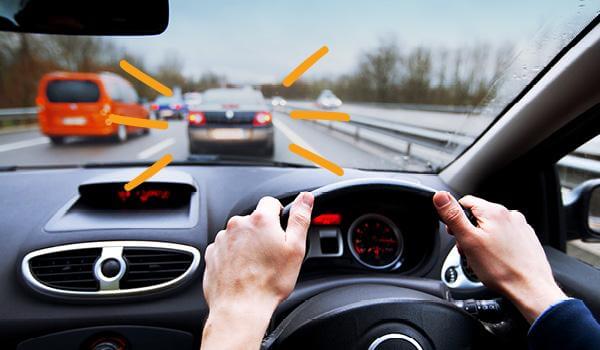Most motor vehicle owners know that their cars are equipped with an Event Data Recorder (EDR) or a vehicle black box. What is important to remember is that, in civil litigation, black box data may help determine in what circumstances the vehicle was responsible for a collision.
When a driver is seriously injured in a car accident, they may be entitled to compensation. The injured party can sometimes even sue the at-fault party to recover compensation.
In the past, drivers who sustained severe injuries had to rely on eyewitness testimonies or police records submitted many hours or even days after an accident to support their case. Recent technological advancements, such as the black box, have made it easier for victims wounded in car accidents to prove their case.
What Is A Car Black Box, And Where Is Located Inside A Car?
In the 1990s, some automakers began installing electronic data recorders (EDRs) in every vehicle to record performance and safety data. In addition, the black box would capture the movement of a car just before and after a crash for a few seconds (usually 5).
The black box is a highly durable electronic device capable of recording important information about the car in the moments leading up to a collision. Furthermore, unlike an airplane’s black box, a car’s black box does not record any audio.
Data is stored in flash memory by a car’s black box, usually found in the control module responsible for airbags and different restraint systems like seatbelts.
What Black Box Recorders Do And Don’t Do
Like an airplane, the stated objective of an automobile black box is to avoid future crashes. Contrary to widespread perception, black box recorders do not record video or audio of the driver’s communications.
The data recorded (quantity and type) differs depending on the manufacturer. In the seconds preceding up to, during, and after a collision, most black boxes collect the following data:
- travel speed,
- cruise control status,
- clutch application,
- brake application,
- seat belt use,
- blinker usage,
- the position of the throttle,
- airbag deployment,
- steering angles,
- ignition cycles,
- date and time.
Some modern models may store up to 30 various sorts of data, including:
- the time of headlight onset,
- driver and front-seat passenger technology usage,
- GPS positions,
- road conditions,
- lane assist performance,
- and other more complex technologies available in today’s autos.
When the vehicle slows down or stops abruptly, the black box recorder is usually triggered to record this information. Some black box recorders may collect more or fewer data than the information provided above.
Collecting this data can assist the vehicle maker in determining whether the crash was caused by a preventable human error or a systemic malfunction. As a result, EDRs are extremely useful after an automobile accident and can establish crash liability in legal claims
How Long Does A Black Box Store Data?
A non-deployment incident occurs when a crash is severe enough to trigger the recorder but not enough to deploy the airbag. The data is volatile in this type of incident, and it is stored for three to four weeks of regular driving activity.
In case of a deployment event – where the airbag is activated – the data is retained indefinitely in the airbag control module or black box and is accessible at any time. The information is still accessible straight from the control module even if it is uninstalled. When the control module was removed from the vehicle to be preserved and used later, the information could only be scanned from the EDR directly.
Who Owns Black Box Data?
Automakers claimed ownership of the data in the first civil and criminal trials involving cars equipped with EDRs. The courts of law eventually decided that it belonged to car owners and lessees.
While general federal legislation states that the only person who has the right to access the data in a vehicle’s black box is the owner or lessee, it also allows the owner to grant permission to a third party to view that data.
The matter was left at each state’s discretion because no explicit federal regulations limited who should have access to black box data. Only 13 states have established legislation governing the ownership of EDR data thus far. And because of this geographical dispersion, a car owner’s rights are contingent on where the accident occurs.
In the 37 states that do not have EDR legislation, no ground standards restrict insurance firms from getting the information—sometimes without the automobile owner’s knowledge.
However, the constitutional protections that limit government searches of private property and prevent persons from being forced to provide embarrassing information extend to a vehicle’s computer systems. Law enforcement must obtain a search warrant to access the data.
How Reliable Is Black Box Data?
It’s impossible to argue with the information gathered by a black box recorder. However, data can be corrupted during the downloading process since the technique for obtaining information from the EDR is not impartial, and black box data may be faulty.
As a result, before any data can be downloaded, the parties must agree on a protocol. For example, many collision reconstructionists use the Bosch Crash Data Retrieval software and hardware products to access black box data for a wide variety of vehicles.
Can Black Box Data Be Used As Evidence In Court?
Data collected from electronic systems in automobiles is a widely acknowledged and well-established technology. However, it is unclear if EDR data would be admissible in court regularly. Just because the material was collected with a warrant doesn’t imply a court will let an attorney offer it to a jury for consideration.
On the other hand, the black box data can be subjected to a scientific evidence admissibility test. When it does pass the test, it’s robust evidence, primarily when used with established accident reconstruction approaches like measuring skid marks and estimating impact forces by a skilled crash reconstructionist. It clarifies the image, supports facts, and fills in the gaps.
Why Is It Essential To Access Black Box Information?
The EDR can be accessed by the owners of a car involved in a crash, but diagnostics will require the use of a crash data retrieval system. The information must be gathered quickly and involves additional expenses. Assume a vehicle has been severely damaged, and the black box requires careful removal and handling. Additional fees may be necessary for this scenario to assist in gathering and reading all of the information needed to prove liability in a legal claim.
After being thoroughly analyzed and given the appropriate weight as evidence, black box data may prove to be helpful. If the driver had access to data demonstrating how their vehicle’s speed varied, how hard it was hit, and braking habits, it might be easier to prove that they were not at fault. Most motor vehicle collision investigators do an excellent job of recreating an accident scene, and technology supports them more than ever before.
About the author:
Sean M. Cleary is the founder and president of The Law Offices of Sean M. Cleary, a Miami car accident law firm. He is a member of the Multi-Million Dollar Advocates Forum and has over 20 years of experience representing truck accident victims.
Follow Techdee for more!





